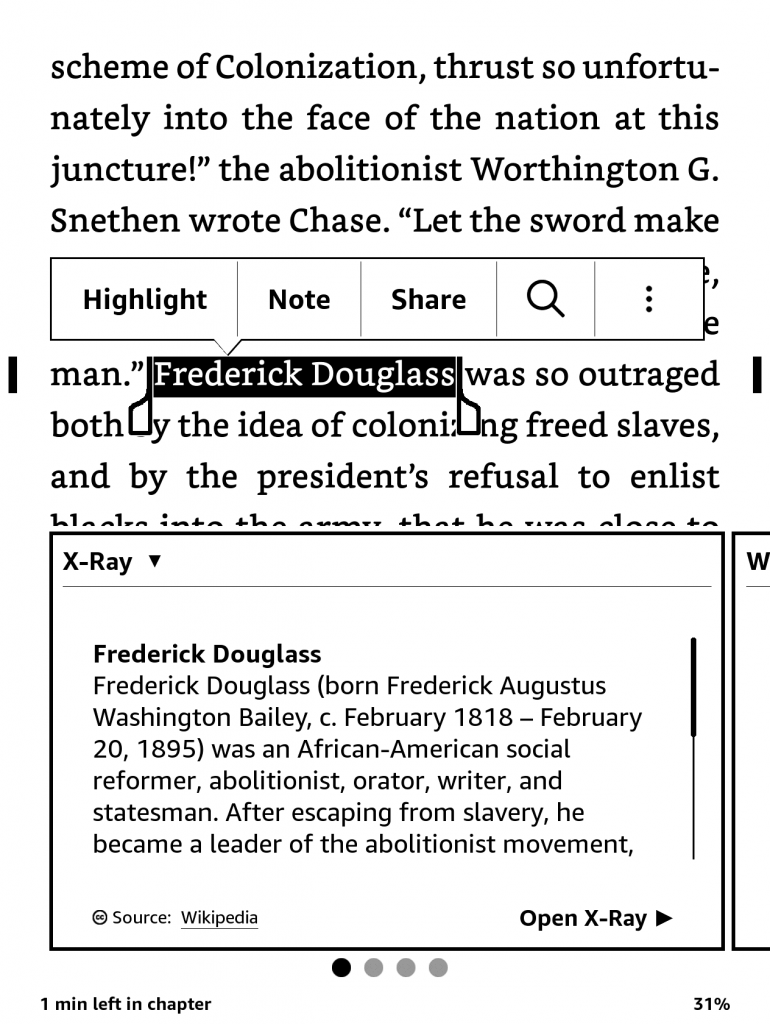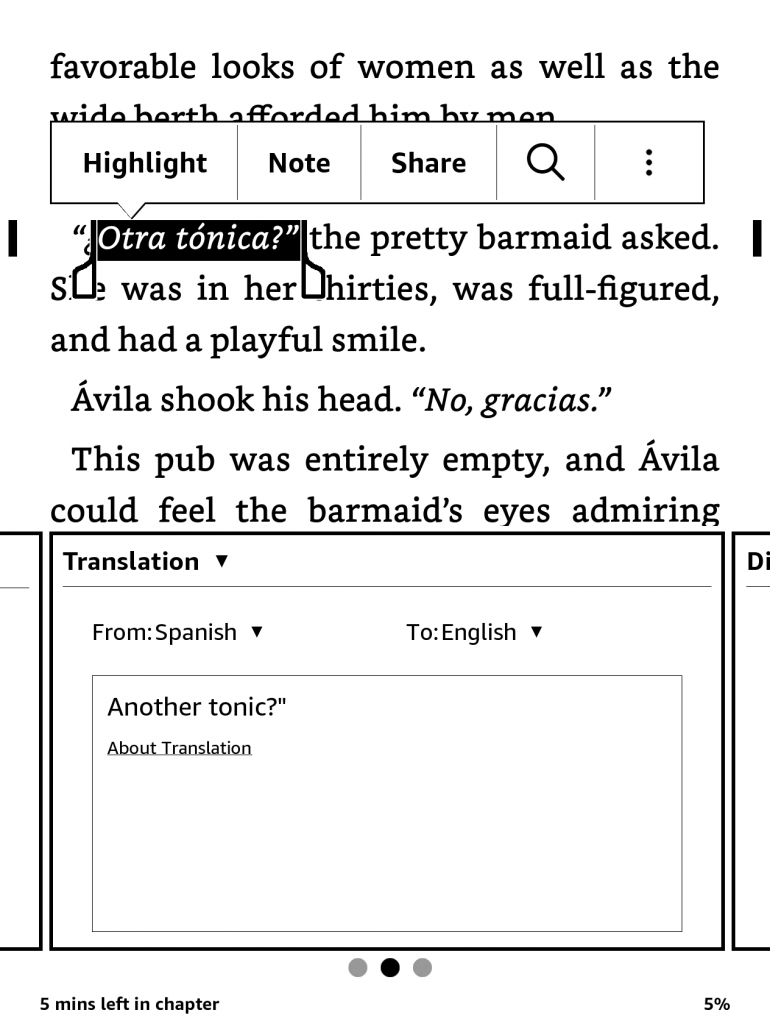How to Read More: Use a Kindle
Reading books is one of life’s great rewards, but in today’s increasingly distractable environment, it can be difficult to find time for books. In this series of posts, I’ll share the tips and tricks I use to read at least 50 books a year without feeling like I’m reading that much at all.
First tip: get an Amazon Kindle e-reader. I’ve collected rare books since my late teens and treasure my personal library, but today most of my reading is done on a Kindle. Here’s why.
Better Reading Experience. This may seem like heresy. How could a gadget be better than the feel of a leather-bound book with quality acid-free paper held in your lap? I know, but today’s Amazon Kindle is a marvel. It weighs less than half of a typical paperback book. It can store thousands of books, which means you can take plenty of books with you without weighing down your bag. The e-ink display is easy on the eyes with changeable fonts and sizes, and most models are backlit so you can read in dim and dark settings. Unlike tablets, the screen looks fine in direct sunlight. The Paperwhite and Oasis models are water-resistant, meaning you can take this to the beach or in the tub with you. The device needs to be charged but has a long battery life. And maybe most importantly, the Kindle has access to over six million ebooks, all accessible in seconds. When faced with the option to read my George Eliot’s Middlemarch, I chose the $0.99 Kindle version over the three volume hardback edition I prize on my bookshelf. I enjoy reading on the Kindle more.
Improved Comprehension. Studies indicate that reading retention may be higher with printed books than e-readers like a Kindle, particularly in books with multiple or shifting story timelines. This makes sense because it’s easier to flip around in a printed book. However, I believe my reading comprehension is better with a Kindle. By touching an unfamiliar word, I can get a full definition from the New Oxford American Dictionary without leaving my place in the book (or the couch!). Pressing the name of an unfamiliar character brings up a short “X-ray” summary to remind you who this person is. Other lookups include Wikipedia and dozens of foreign language dictionaries for on-the-fly translations. These references appear and disappear seamlessly without interrupting your train of thought. With a finger, I can highlight sections of the book that are memorable to me and that I’d like to find again quickly. All my highlights are indexed on the device and on a personalized web site for all the books I’ve read. It’s a fantastic resource which I use all the time. I've provided Kindle screenshots at the bottom of this article to show how the dictionary, X-Ray and foreign language translation tools work.
Read More. Always having a book with you is one of the secrets of reading more. The Kindle’s tiny size makes it easier to take along than the usually much larger printed book. Having the Kindle App on my iPhone makes reading even more accessible. Kindle utilizes a syncing service called Whispersync that tracks your place from device to device. If I’m early for a meeting, I can open the app on my phone and pick up right where I left off the night before from my Kindle at home. It’s amazing how much you can read in three or four 10 minute sessions during the day. When I pick up my Kindle again, it remembers where I left off on my phone. This Whispersync technology even works with Audible audiobooks: read on Kindle at night; hear it narrated professionally on your commute. All without needing to find your place. Magical.
Save Money. While there’s an upfront investment in the device itself, bookworms will usually save money over print books1. First off, Kindle eBooks typically cost less than the equivalent paperback, and almost certainly less than the hardback. There are also the savings in travel time and expense to visit the bookstore. You can download a free sample chapter of any book first to reduce the risk of buying a book you won’t read. But the real savings pile up by checking out Kindle books from your public library. I use the King County Public Library which holds an astounding 4.8 million ebooks and audiobooks for checkout. Most all of these can be read at no cost whatsoever right on your Kindle. Books in high demand may take a while to become available, but with patience and utilizing holds, you’ll soon be awash in great free books delivered in seconds to your Kindle. For me, this is one of the best benefits of the Kindle.
Unlike most other gadgets I’ve bought, the Kindle has been an amazingly long-lasting purchase. I am still using a Kindle Paperwhite I purchased for $119 over six years ago. This isn’t something you need to upgrade every couple of years like smartphones.
This isn’t to say that the Kindle is perfect for all books and all readers. For example, there were a few books I read this year that wouldn’t work as an ebook. Neil Gaiman’s Sandman graphic novel or Mark Danielewski’s disturbing and fascinating meta-book House of Leaves are two examples. Any book with a lot of illustrations or artwork won’t be satisfying on a Kindle. Reading retention rates are lower for books with a lot of chronological shifts and confusing plotlines that require you to keep referring back to earlier sections of the book (though X-Ray helps a lot with that). Books that you love and would read again might be best in printed form. I have a glorious set of Patrick O’Brian’s Aubrey and Maturin novels that fall into this category for me (disclosure: I have this same set on Kindle and audio - I love these books!).
Some may not read enough books in the year to benefit from a Kindle. Others may find their local library is super convenient. While others simply can’t embrace technology of any sort between themselves and their reading. I get this. I was this. It took some time for me to make this transition.
Other drawbacks: you don’t own the books you buy on Kindle. It’s more of a license, which means they could one day expire or be revoked. You can’t sell or pass along Kindle books to friends. The more books we buy on Amazon (print or Kindle), the worse it is for independent bookstores, which provide such a wonderful benefit to our local communities. For the books I need in print, I make sure to buy locally.
You might wonder if you still need a Kindle if you have a smartphone or tablet with the Kindle App. Do you really need a stand-alone reading device? If you plan to read a lot, you do for two reasons. First, reading on a computer screen, regardless of the pixel density, is hard on your eyes. While it’s fine for short stretches, the glare and strain of reading on a computer display will tire your eyes quickly, and wreak havoc with your sleep if you read before bed. The Kindle’s e-ink isn’t a computer screen at all, but well-orchestrated bits of black and white particles that rearrange themselves into letters and words. No glare, no strain. Second, all the notifications and multi-tasking distractions that make modern smartphones and tablets wonderful communication devices are non-existent on a Kindle which does one thing: put words on a page for focused, distraction-free reading. No temptation to check your Instagram feed, no way to send that quick text between page turn, just good old fashioned reading - the kind of environment you need where the technology fades and the story takes over. You can only get that with a printed book or a dedicated e-reader.
So which Kindle should you buy? There are three models to choose from: the entry-level Kindle, the mid-range Paperwhite, and the luxury Oasis model. I think the Paperwhite version (currently $100 at Amazon) is the best choice for most readers. It’s backlit with a bright clear screen, water-resistant, lightweight, sports a long battery life, and stores thousands of books.
So, this is my first tip: If you want to read more books in the coming year, think about using a Kindle and the Kindle app on your phone.
Are you using a Kindle now? Do you like it? Why, or why not?
[caption id="attachment_533" align="aligncenter" width="525"] Kindle Dictionary Kindle X-Ray
Kindle X-Ray
 Kindle Language Translation
Kindle Language Translation
-
-
- If you spend $140 every five years for a Kindle Paperwhite, including a nice cover and taxes, the device will pay for itself in just four books a year, assuming a $12 paperback cost, an $8 kindle e-book cost, and $4 per book in transportation costs to and from the bookstore. ↩︎
-